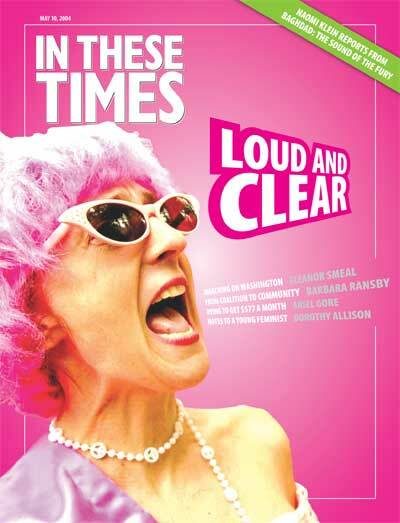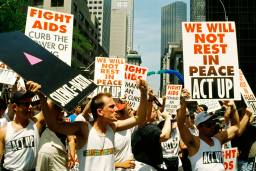It’s been in the New York Times, so it must be official: Transpeople are here in number and they’re here to stay. Transsexuals (those who medically change the hormonal and/or anatomical aspects of their biological sex) and transgendered people (those who change or redefine their gender that may not include any medical change) are, as illuminated in the March 7 Times article “On Campus, Rethinking Biology 101,” increasingly visible and vocal, and they’re out there doing shocking, subversive things — like going to college and working for appropriate living conditions on their campuses. These efforts bring up any number of issues about equal access, but also about the nature and meaning of personal attributes we’re taught to think of as fixed and immutable, like sex and gender.
Trans may only now be gracing the pages of the Times, but it’s been an issue among feminists for years. From the long-running controversy over admitting only “womyn-born-womyn” to the nearly 30-year-old Michigan Womyn’s Music Festival, to whether the lesbian community is losing its butch women to transsexuality, transfolk are forcing feminism to face difficult, sometimes uncomfortable, questions.
Such questions are not only about trans people, although they’re often framed that way. They’re questions about the nature of feminism, about essentialism and binarism and how we should challenge oppressive ideologies of gender. The question is raised, in some quarters, of whether trans issues belong in feminism at all. Isn’t it hard enough for feminists to create change without being asked to take on the cause of people who are something other than biological women?
Here’s an attempt at an answer: Feminism has been fighting for generations against the notion that biology equals destiny. Do we really believe it? Or are we still clinging to a mythos that insists there’s some numinous ontological essence called “man-ness” or “woman-ness”? Transfolk, increasingly numerous, loud and proud, are calling our bluff.
Some feminists worry that too much focus on transsexual issues will undermine feminism’s ability to create change for women. Part of me understands the old guard fear these people-who-are-not-women will take over some of women’s hard-won space at the table. At the same time, I gently remind my trans-resisting friends that while transfolk may not be “women” by conventional definitions, neither are they “men.”
There is no monopoly on oppression. In a culture that continues to put the pole of the masculine biological male on top and everything else below it, this means that biological women and transpeople share a common cause. A sex change, no matter its direction, never reprieves anyone from that particular struggle. This is the very reason so many transfolk become so political. Like women, transfolk have little to lose and a great deal to gain by challenging the status quo.
Positing such challenges is our feminist birthright. Growing up, feminism’s biggest gift to me was the message that people could be and do anything they wanted because it was human potential, not sex, that mattered. There were no qualifiers attached: anything. Undoubtedly most of the second-wavers who fought to offer that freedom were not thinking at the time that it might include the freedom to be another sex or gender (or none at all) or do something as radical as remodeling one’s body. That’s OK. First-wave feminism did not campaign for women’s freedom to be lesbians, either, yet “lesbian-feminism” became one of the critical modes of the second wave.
It’s all about the same basic thing: Exposing the lies of essentialism. Breaking down the essentialist wall of compulsory heterosexuality is not so different from shattering the essentialisms behind compulsory binary sex and gender, nor so different from loosing the grip of the essentialism that denied women education, jobs and the vote. If we want to see the day where that “anything” holds water, where we really judge the person and not the parts, creating a trans-inclusive feminism must be part of our mandate.
Adding trans to feminism is a lot like using a chainsaw for the first time. It’s powerful and different and heavy and loud and, yes, scary as hell until you learn how to guide it, how to let it do what it does well. Transfeminism will take its place in the toolbox, and we will use it and use it well. Until then, we must ignore our ringing ears and buzzing teeth and continue to pick up that chainsaw, letting its roar announce our progress.

I hope you found this article important. Before you leave, I want to ask you to consider supporting our work with a donation. In These Times needs readers like you to help sustain our mission. We don’t depend on—or want—corporate advertising or deep-pocketed billionaires to fund our journalism. We’re supported by you, the reader, so we can focus on covering the issues that matter most to the progressive movement without fear or compromise.
Our work isn’t hidden behind a paywall because of people like you who support our journalism. We want to keep it that way. If you value the work we do and the movements we cover, please consider donating to In These Times.




